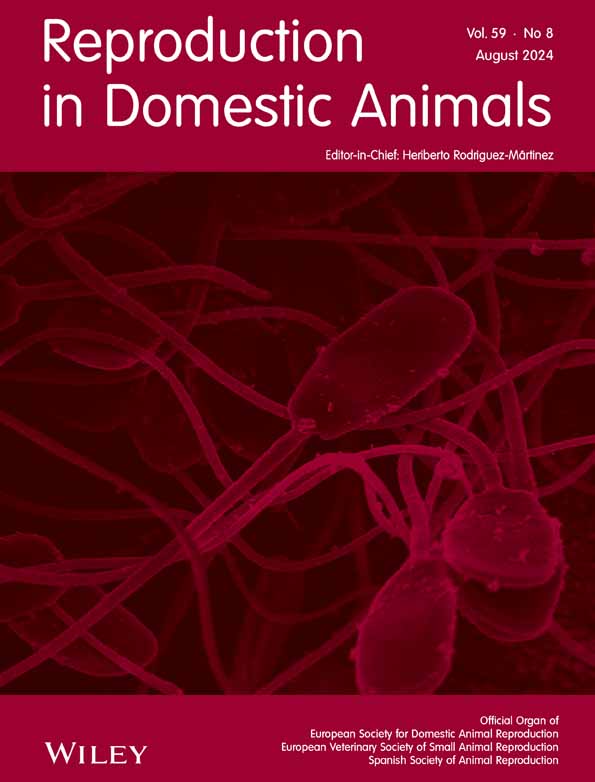Factors contributing to stillbirth in young hyper-prolific sows in a tropical free-farrowing system
Abstract
The present study investigated factors associated with the incidence of stillbirth in young hyper-prolific sows within free farrowing systems in tropical environments. A total of 714 live-born and 54 stillborn piglets from 57 Landrace × Yorkshire sows, with an average parity of 2.7 ± 1.0 (range: 1 – 4), were comprehensively investigated. Reproductive variables of the sows, including gestation length, farrowing duration, the total number of piglets born per litter, and the birth order and status of each piglet, were recorded. Differences in the physiological characteristics of live-born and stillborn piglets, such as birth interval, cumulative birth interval, body weight at birth, crown-rump length, body mass index (BMI), ponderal index (PI), meconium staining score, and the percentage of piglets with a broken umbilical cord, were analysed. Piglets were divided into four groups based on the quartiles of birth order (Q1–Q4). On average, the duration of farrowing was 173.3 ± 85.9 min, and the total number of piglets born and number of piglets born alive-per litter were 14.1 ± 3.8 and 12.5 ± 3.5, respectively. The incidence of stillbirth was 6.7% (54/801 piglets). The higher percentages of stillbirths were detected in sows with large litter sizes (≥17 piglets, 10.9%) compared to those with small (≤13 piglets, 6.1%) and moderate (14 – 16 piglets, 2.8%) litter sizes (p < .001). The incidences of stillbirth in Q3 and Q4 of the litters were higher than in Q1 and Q2 (p < .001). Compared to live-born piglets, stillborn piglets had higher cumulative birth interval (103.0 ± 3.71 vs. 142.4 ± 9.35 min, p < .001), BMI (17.1 ± 0.15 vs. 18.4 ± 0.39 kg/m2, p = .002), PI (63.7 ± 0.59 vs. 70.8 ± 1.59 kg/m3, p < .001), meconium staining scores (1.78 ± 0.04 vs. 2.04 ± 0.10, p = .021), and the percentage of piglets born with a ruptured umbilical cord (45.2% vs. 66.0%, p = .004). An increase in the incidence of stillbirth was detected at 60, 120, 150, 180, and ≥ 210 min after the first piglet was born, compared to those born within the first 30 min of farrowing (p < .05). In conclusion, the study found that stillbirths in young, hyper-prolific sows were linked to several factors: large litter sizes (≥17 piglets per litter), prolonged cumulative birth intervals (142.4 min), elevated BMI of 18.4 kg/m2, high PI values of 70.8 kg/m3, increased meconium staining scores, and a higher occurrence of ruptured umbilical cords. To reduce the risk of stillbirth, particularly among piglets with high body indices born later in the birthing process, it is recommended to enhance farrowing supervision for young sows, starting at a cumulative birth interval of 60 min.
CONFLICT OF INTEREST STATEMENT
The authors declare no conflict of interest.
Open Research
DATA AVAILABILITY STATEMENT
The dataset generated and analysed in the current study is available from the corresponding author upon request.




